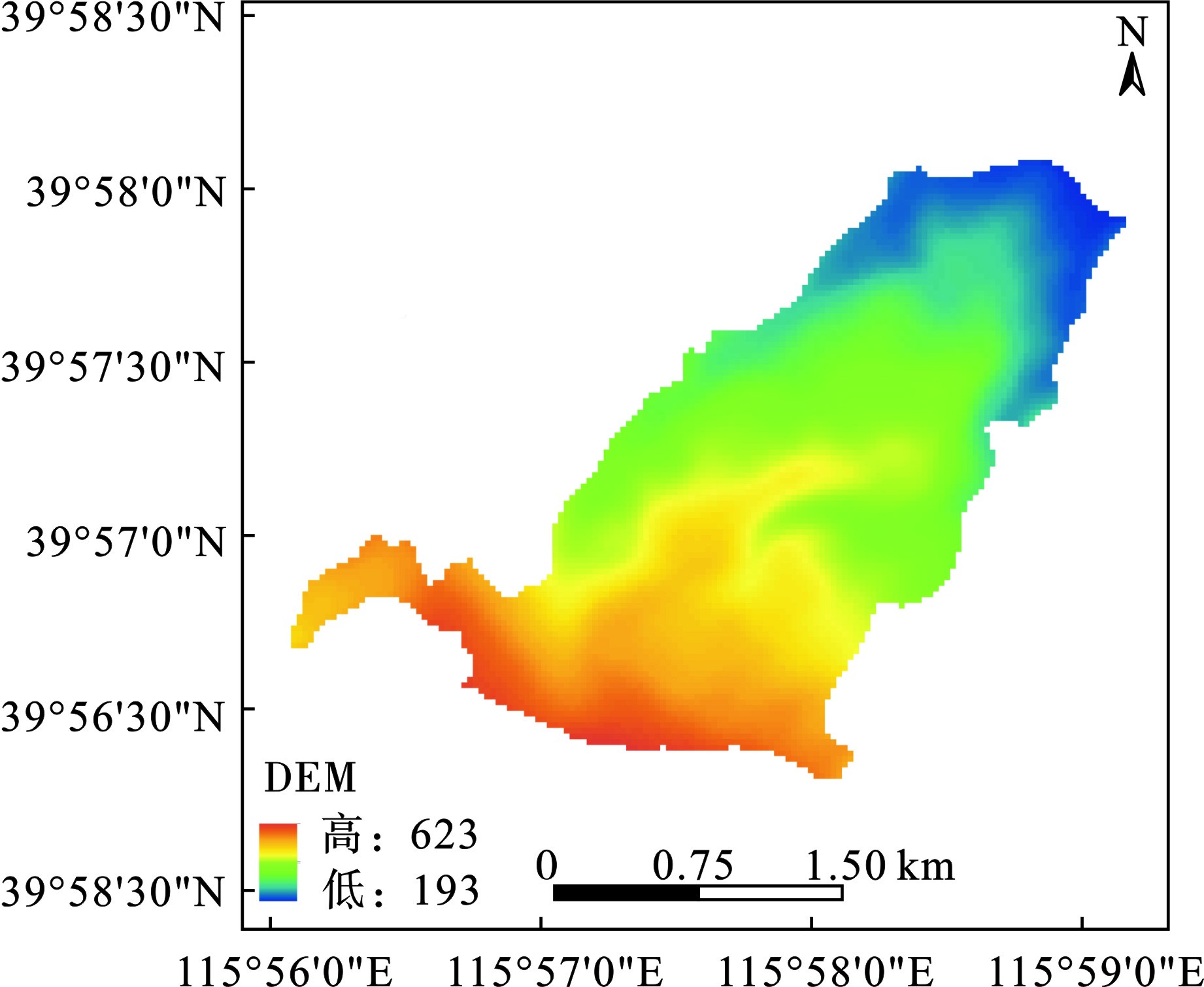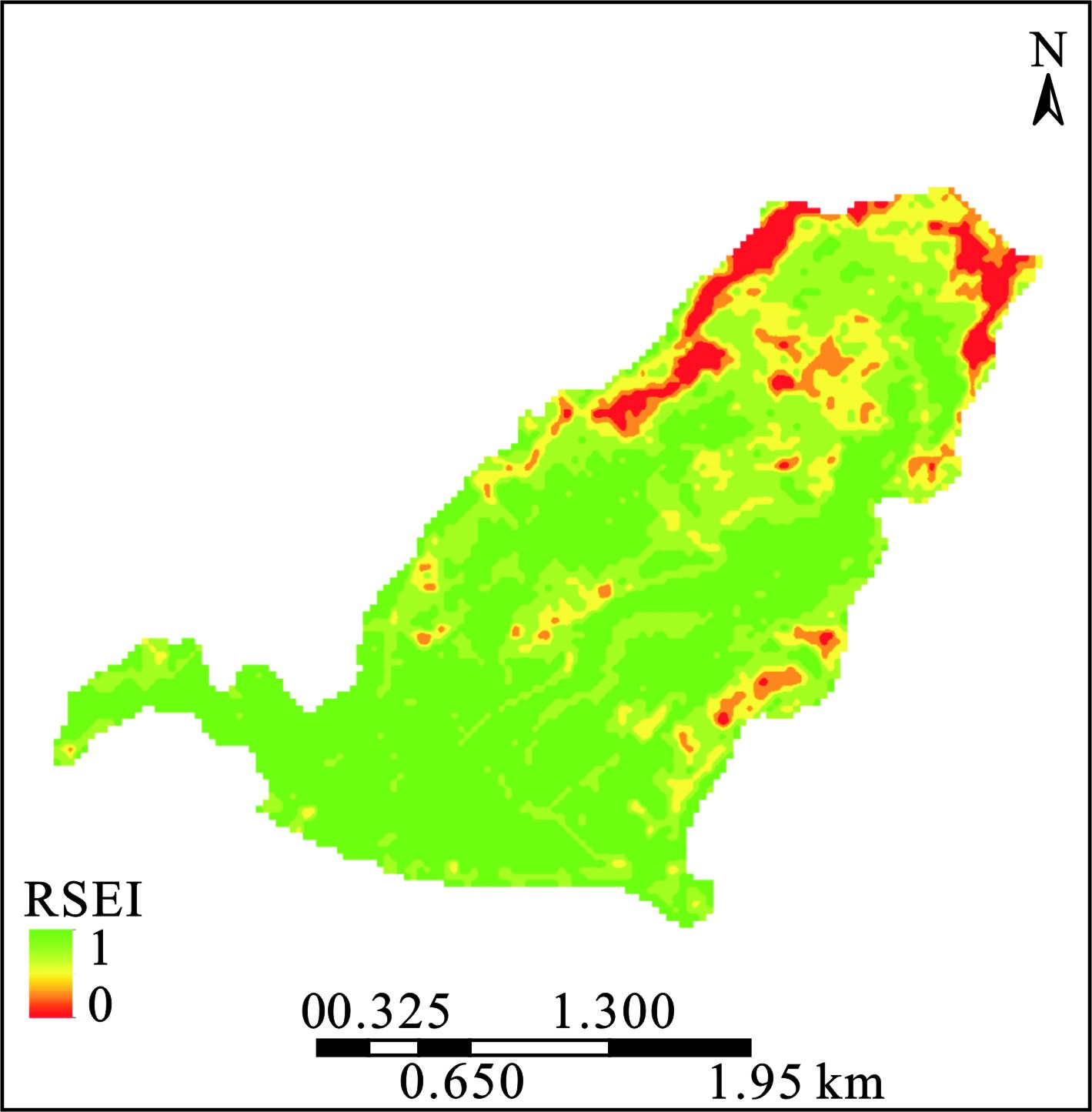-
邻苯二甲酸酯(phthalates esters,PAEs)又称酞酸酯,是邻苯二甲酸形成的酯类总称,传统的PAEs具有性能良好、生产工艺成熟的特性[1],被大量合成以生产各种塑料[2] ,其产量约占塑化剂总产量的80%[3]。PAEs被广泛应用于食品包装、医疗卫生、化妆品等生活各个方面[4],其在环境中无处不在,可以通过呼吸、饮食和皮肤接触等途径进入生物体内[5],由于PAEs具有类雌性激素活性,其进入生物体后会促使生殖系统紊乱[6]。PAEs带来的环境污染问题日益严重,成为国内外研究的热点之一。有研究学者指出,陆地土壤中微塑料的含量是海洋体系中的4~23倍[7],PAEs通过大气沉降、灌溉和工业废水排放等过程的迁移和转化进入到土壤中,土壤是受PAEs污染主要的汇[8]。PAEs对人体健康和生态环境均构成了潜在的危害,目前已经成为全球最主要的污染物之一[9]。因此,US EPA将邻苯二甲酸二甲酯(DMP)、邻苯二甲酸二乙酯(DEP)、邻苯二甲酸二丁酯(DBP)、邻苯二甲酸丁基苄基酯(BBP)、邻苯二甲酸二(2-乙基)己酯(DEHP)和邻苯二甲酸二正辛酯(DNOP)列为优先控制污染物[10],我国也将DEP、DBP、DNOP列为优先控制污染物[11]。
兰州城区化工业发展迅速,区域人口密集,交通拥堵,以及频繁的人群活动带给土壤环境强烈的干扰[12]。近几年,越来越多的学者开始关注甘肃地区土壤环境污染问题,不过大多关注农田土壤的研究[13-14],对兰州城区土壤环境问题的研究较少且主要以重金属为主[15-16],几乎没有关于兰州城区土壤 PAEs 污染的相关研究。考虑到城市快速发展对土壤的累积影响效应,及土壤环境污染物对人群健康风险,对兰州主城区不同区域土壤中PAEs的含量和污染特征进行分析,对土壤中PAEs的来源进行分析讨论,利用US EPA推荐的健康风险评价模型[17]评估6种优先控制PAEs对人群的致癌/非致癌风险评价,筛选出兰州城区土壤中主要PAEs污染物,以期待结果可以为兰州城区土壤环境决策和相关的标准制定提供一定的理论依据和数据参考。
-
本研究与兰州市加油站区域土壤调查项目联合开展,主要采集加油站附近的表层土壤。在对兰州现有加油站进行实地调研,并了解了城市加油站地块分布后,选取兰州市24个采样点,于2021年10—11月采集表层土壤样品24组,其中,城关区9组,七里河区6组,安宁区4组,西固区5组。考虑到钻探点位0~20 cm为混凝土,故选择在0~50 cm的表层土层进行采样,所有采样点位使用GPS记录采样点位的经纬度坐标,并记录四周环境状况。通过Arc GIS 10.2绘制兰州城区采样点,见图1。前期土壤样品剔除植物根系、砾石等杂物后,采集500 g土壤放入500 mL螺口棕色玻璃瓶中。同一个采样点同时采集土壤样品、土壤平行样品,2份为1组。所有样品放在<4 ℃保温箱中避光冷藏带回实验室分析检测。
-
所用试剂:二氯甲烷(色谱纯)、乙酸乙酯(色谱纯),无水硫酸钠(分析纯)、中性氧化铝(74~150 μm,分析纯)。标样为邻苯二甲酸酯6种PAEs混标DMP、DEP、DBP、BBP、DEHP和DNOP,内标物邻苯二甲酸二乙基己基酯(DEHP-D4)、邻苯二甲酸二正戊酯(DPP-D4),替代物苯甲酸苄酯(BBZ)。
-
参考《土壤中邻苯二甲酸酯测定 气相色谱-质谱法:GB/T 39234—2020》和《土壤和沉积物6种邻苯二甲酸酯类化合物的测定 气相色谱-质谱法:HJ 1184—2021》中的方法提取土壤中PAEs。准确量取1.00 g中性氧化铝于玻璃层析柱中,先用5 mL二氯甲烷活化15 min,再使用乙酸乙酯淋洗玻璃层析柱,氮吹2 min后备用。称取10.00 g土壤样品,加入5.00 g无水硫酸钠研磨均化成流沙状,全部放入50 mL棕色玻璃瓶中。加入200 μL BBZ,再加入20 mL乙酸乙酯,静置30 min,设置涡旋离心机700 r/min,提取20 min,使其充分提取,静置20 min。全部提取液过氧化铝玻璃层析柱,净化液收集于30 mL玻璃离心管中,吸取1 mL至进样小瓶中,加入10 μL内标物使用液待测。空白样品使用石英砂代替,按照和土壤样品相同的处理步骤制备。
本实验使用岛津GC-MS 2010 ULTRA气相色谱-质谱联用仪。色谱条件:色谱柱:DB-5MS(30 m×0.25 mm×0.25 µm);程序升温:初始温度50 ℃,保持1 min,以15 ℃/min速率升温至280 ℃,保持5 min;载气为高纯度氦气(纯度≥99.999%);进样口温度280 ℃;不分流进样;载气流速1.2 mL/min(恒流)。质谱条件:电子轰击源(EI);电子能量70 eV;离子源温度230 ℃;数据采集方式为SIM模式。目标物的定量参数,见表1。
6种PAEs分离较好,其中DEHP和内标物2(DEHP-d4)出峰重合,因离子碎片不同,可完全分开,不影响定量结果。6种PAEs色谱图,见图2。
-
本实验的样品采集和保存环节避免接触塑料制品,以防对土壤样品和实验的准确度造成影响[18]。在全流程空白样品与运输空白样品中均未检出PAEs。依据《土壤和沉积物中6种邻苯二甲酸酯类化合物的测定 气相色谱-质谱法:HJ 1184—2021》,在实验开始前,使用铬酸洗液和蒸馏水清洗所有的玻璃器皿,再使用烘箱烘干备用。实验过程中使用的氧化铝、石英砂、铝箔和无水硫酸钠均经过马弗炉400 ℃的温度条件下灼烧6 h,待冷却后收集于玻璃器皿中备用。向空白样品中分别添加0.02、0.03、0.05、0.1、0.2、0.4和 0.5 mg/L的6种PAEs进行回收率试验,得到空白样品加标回收率为60.0%~91.0%。采用7个浓度点配线性标准曲线,各线性R2均在0.999以上。前处理过程中每份样品做3个平行样,且所有样品在处理过程中均加入苯甲酸苄酯作为替代物,替代物回收率为61.06%~120.3%。样品前处理保证10个样品做3个空白试验,确保实验的准确性。
-
基于兰州城市快速发展及人群活动对土壤造成的压力,针对兰州城区土壤受PAEs污染对人群健康风险进行评估。我国于2019年推出《建设用地土壤污染风险评估技术导则:HJ 25.3—2019》,由于该规范目前仅有DEHP、DEP、DBP、BBP和DNOP污染物且缺少部分风险评估毒性参数数据,不能完成风险评估的计算,因此本研究采用US EPA提出的PAEs非致癌和致癌风险评价方法[17]。城市土壤中PAEs可经口摄入、皮肤接触和呼吸吸入3种途径进入人体危害健康[19],查阅《城市用地分类与规划建设用地标准:GB 50137—2011》,在城市土壤中,成人的暴露期长、频率高,以成人为对象,通过计算3种途径的非致癌风险(HQ)数值和致癌风险(CR)数值,研究土壤中PAEs含量水平对人体的非致癌和致癌风险。PAEs单体中,DMP、DEP、DBP和DNOP为与人类健康有关的非致癌物质,DEHP、BBP为致癌物质[20]。PAEs非致癌/致癌健康风险评价公式模型,见表2。
此模型中健康风险暴露评估参数值(表3)参考US EPA推荐数值、相关研究文献[20-22]、《城市用地分类与规划建设用地标准:GB 50137—2011》和《建设用地土壤污染风险评估技术导则:HJ 25.3—2019》选取。对于非致癌物质,HQ>1表现出非致癌风险;对于致癌物质,CR>10−6表现出致癌风险[17]。结合US EPA和我国公布的优先控制污染物名单进行筛选,本研究针对6种PAEs进行健康风险评价。
-
兰州城区土壤PAEs浓度水平,见表4。监测期间采集的全部土壤样品中,DMP、DEP和BBP未检出,DBP、DEHP和DNOP有检出,表明兰州城市土壤已经受到PAEs的污染。本研究中所检测出的3种PAEs浓度之和(ΣPAEs)范围为0.044~1.034 mg/kg,平均浓度为0.217 mg/kg,PAEs单体中DBP浓度范围为0.012~0.211 mg/kg,平均浓度为0.065 mg/kg;DEHP浓度范围0.002~0.31 mg/kg,平均浓度为0.063 mg/kg;DNOP浓度范围0.01~0.643 mg/kg,平均浓度为0.089 mg/kg。DBP、DEHP和DNOP平均浓度水平排序依次为DNOP>DBP>DEHP。
通过对比24个采样点土壤中PAEs浓度水平(图3)发现,22#点位ΣPAEs含量最高,该点位处于以工业为主的西固区,可能与该区域工业发展引起的土壤污染有关[23],其他点位土壤也受到PAEs不同程度污染。
-
兰州城区土壤中6种PAEs单体中仅有DBP、DEHP、DNOP检出,含量水平见表5,兰州城区整体土壤受PAEs污染程度排序:西固区>七里河区>城关区>安宁区,其PAEs组成见图4,DNOP是贡献率最高的PAEs单体,贡献率为19%~56%,DBP和DEHP的贡献率也分别占到了23~51%和10%~45%,同时可以验证DBP和DEHP是我国使用量最多的两种PAEs[24]。本研究中,DNOP、DBP和DEHP为兰州城区土壤PAEs的主要污染物。
张文娟等[25]对西安不同功能区PAEs污染情况进行调查,6个功能区PAEs从高到低依次为交通区>工业区>混合区>公园>文教区>住宅区。WANG et al[26]发现西安市DBP、DEHP各自平均含量最大值均出现在交通区。而加油站作为交通区的节点,是人们驾驶出行频繁进出的场所,且加油站具有汽车尾气排放、车胎与地面间磨损释放PAEs、车流量大等场所特点,尾气排放加速空气中的PAEs进入土壤,都会使得加油站场所内区域性PAEs浓度有增高的趋势。且PAEs属于半挥发性有机物,PAEs对土壤的污染会随着时间的发展产生累积效应,大气远距离的干、湿沉降也会使得土壤区域PAEs含量偏高[27]。
PAEs的来源分析对于控源减排至关重要,因此,进一步推断兰州各城区土壤中PAEs的可能来源。从研究结果发现,西固区以DNOP单体为主要污染物,西固区具有以石油化工、煤炭为主要产区的区域背景,工厂分布疏散,工厂运作过程中会向大气和土壤中释放PAEs;七里河区和安宁区以DBP单体为主要PAEs污染物,七里河区为商贸区,安宁区为文教区,楼群密集,人口相对较多,人群活动密集;城关区以DEHP单体为主要污染物,城关区作为兰州城区的交通枢纽和经济中心,具有人群活动密集、交通拥挤等区域特点。DBP、DNOP、DEHP被广泛用于汽车轮胎、表面油漆、道路沥青材料、化妆品和个人护理产品中使用,在工业中作增塑剂以改善产品的可塑性[28-29],且已有研究表明,PAEs含量与人群活动相关[30]。由于各行政区区域背景不同,因此,可推出兰州城区各行政区的PAEs来源也不尽相同,西固区PAEs的潜在来源主要是工业污染源,工业生产活动中油漆、沥青和塑料等材料的使用,塑化剂类污染物排放都会使得区域性DNOP单体偏高;七里河区和安宁区PAEs潜在来源主要是人为污染源,区域内人群活动密集,日常塑制生活垃圾、化妆和个护产品的丢弃等人为活动,使得七里河区和安宁区以DBP单体为主要的PAEs污染物;城关区PAEs的潜在来源主要为交通污染源,汽车等运输工具在运输过程中,汽车尾气排放、轮胎磨损、道路沥青铺设等活动加速了PAEs进入土壤中,导致城关区域受DEHP单体污染较为明显。
-
本研究采样点在加油站内,加油站在城市土地利用类型中属于二类用地,参考我国《土壤环境质量 建设用地土壤污染风险管控标准:GB 36600—2018》二类用地土壤污染物的筛选值和管制值,DEHP筛选值为121 mg/kg,管制值为1 210 mg/kg,DNOP土壤环境筛选值为2 812 mg/kg,管制值为5 700 mg/kg。本研究结果显示,检测到的2种PAEs单体:DEHP和DNOP远低于我国城市土壤污染物管制值。由于我国未设定土壤中PAEs单体DBP的污染控制标准,本研究参考US EPA设定的土壤PAEs化合物控制标准和治理标准,在调查的24个采样点中,有6个采样点土壤样品DBP含量超过0.08 mg/kg的控制标准,其余均明显低于控制标准。
为了进一步评估兰州市城区土壤受PAEs污染情况,将兰州城区土壤PAEs浓度水平(ΣPAEs=0.217 mg/kg)与国内外其他城市土壤进行对比,见表6。兰州城市土壤ΣPAEs浓度水平明显低于西安城市土壤(10.95 mg/kg)、北京城市土壤(2.76 mg/kg)和沈阳城市土壤(0.652 mg/kg)、远低于广州城市土壤(41.191 mg/kg),重庆市城市土壤(0.214 mg/kg)与本研究PAEs浓度水平相当;与国外其他城市相比较,兰州城市土壤PAEs浓度水平远远低于巴黎城市土壤(13.46 mg/kg)和莫斯科城市土壤(49.83 mg/kg),兰州市土壤PAEs略高于丹麦土壤(0.071 mg/kg)。通过整体数据比对可以看出,DEHP、DBP是我国土壤受PAEs污染的两个主要单体污染物,在重庆城市土壤中,DEHP和DBP占比ΣPAEs分别为63.38%、26.56%;广州城市土壤中,DEHP占比达到87.96%,DBP占比9.87%。
-
本研究选取US EPA推荐的方法评估了兰州城区土壤中仅检测到的3种PAEs单体(DBP、DEHP、DNOP)通过非饮食途径的人体健康风险,3种PAEs单体中DBP、DNOP对人体健康表现出非致癌性,DEHP表现出致癌性,结果见图5。对于非致癌性PAEs单体,DBP的HQ数值为1.144×10−3~2.02×10−2,DNOP的HQ数值为1.947×10−5~1.25×10−3,本研究所检测到的3种PAEs单体的非致癌和致癌风险系数范围,与US EPA规定的风险管控数值相比,非致癌风险数值在US EPA规定的安全阈值范围内(HQ<1),致癌性PAEs单体DEHP的CR数值为7.476×10−10~1.181×10−7,同样低于US EPA规定的致癌风险可接受水平(CR<10−6)。
对于兰州城区土壤中PAEs对人体健康风险评价可见,DBP、DNOP虽不存在非致癌风险,但2种单体贡献率最高达到51%和56%,应引起重视。PAEs单体DEHP对人体健康不存在致癌风险,但应采取积极的方式预防其带来的潜在危害。
-
(1)2021年10—11月对兰州城区24个点位土壤进行采样,所有土壤样品中均检测到3种PAEs单体DBP、DEHP和DNOP。ΣPAEs污染物浓度0.044~1.034 mg/kg,平均值为0.217 mg/kg。3种PAEs单体相较于国内城市用地土壤标准,DEHP、DNOP未超标,相较于US EPA设定的控制标准部分点位DBP单体含量超标。总体上,与国内外其他地区城市土壤相比兰州城区土壤PAEs浓度水平相对较低。
(2)本研究依据US EPA推荐的人体健康风险评价模型进行评估,结果表明,兰州城区土壤中PAEs单体DBP、DNOP浓度水平对人体健康的HQ数值小于1,致癌PAEs单体DEHP对人体健康的CR数值小于10−6,表明土壤中PAEs对人体的非致癌风险和致癌风险数值均处于US EPA规定的风险区间内。
(3)DBP、DNOP和DEHP作为兰州城区土壤的主要PAEs污染物,主要来源交通运输、工业材料和人群活动的影响。不同类型塑料包装物引起的土壤污染存在显着差异。且随着使用时间延长土壤污染越严重。因此对生活塑料垃圾进行适当的分类处理会降低土壤的污染程度,使用可回收、可降解的环保塑制产品推进清洁汽油的使用也可以有效预防土壤环境污染的发生。
土壤邻苯二甲酸酯污染特征分析和人体健康风险评价
——以兰州城区为例Analysis of soil phthalate pollution characteristics and human health risk assessment
-
摘要: 利用气相色谱-质谱联用法对兰州市城区24个采样点表层土壤中6种邻苯二甲酸酯(PAEs)的浓度进行测定,并应用美国国家环境保护局(US Environmental Protection Agency, EPA)推荐的人体健康风险评价模型评估了兰州城区土壤中PAEs对人体健康的非致癌、致癌风险指数。结果表明:兰州城区土壤PAEs浓度为0.044~1.034 mg/kg,平均浓度为0.217 mg/kg;各区按照PAEs浓度排序为西固区>七里河区>城关区>安宁区;兰州城区土壤检出PAEs以邻苯二甲酸二丁酯(DBP)、邻苯二甲酸二(2-乙基)己酯(DEHP)和邻苯二甲酸二正辛酯(DNOP)污染物为主,其贡献率分别为51%、45%和56%,依据测定并结合各区域背景,推测出PAEs潜在来源主要为工业污染源、人为污染源和交通运输污染源。人体健康风险评估结果表明:兰州市PAEs的非致癌风险(HQ)、致癌风险(CR)均低于US EPA推荐的安全阈值,对人体健康不构成危害。Abstract: The concentrations of six kinds phthalates (PAEs) in the surface soil of 24 sampling sites in Lanzhou were tested by gas chromatography coupled with mass spectrometry. The human health risk of phthalates in Lanzhou urban soil was evaluated using the human risk assessment model recommended by US Environmental Protection Agency (US EPA), assessing both non-carcinogenic and carcinogenic risk indices. The results showed that the concentration of phthalates esters in Lanzhou urban soil range from 0.044 to 1.034 mg/kg, with an average concentration of 0.217 mg/kg. According to the overall pollution content, the concentrations in different districts ranked as Xigu, Qilihe, Chengguan, and Anning. The predominant PAEs detected in Lanzhou urban soil were DBP, DEHP and DNOP, contributing to 51%, 45% and 56% of the total PAEs concentration respectively. Based on the determination and regional background, potential sources of PAEs were mainly from industrial pollution sources, anthropogenic pollution sources, and transportation pollution sources. The results of human health risk assessment showed that the non-carcinogenic risk (HQ) and carcinogenic risk (CR) of phthalates in Lanzhou were below the safety thresholds recommended by the US EPA, posing to no harm to human health. However, preventive measures and controls should still be taken into consideration.
-
Key words:
- phthalate ester /
- surface soil /
- health risk evaluation /
- Lanzhou
-
随着党的“十八大”召开,“五位一体”总体布局战略目标的提出,中国对于生态文明建设的重视提高至一个新高度。我国矿产资源开采历史悠久,在为国家经济发展提供坚实保障的同时,因不合理矿产资源开发利用方式导致遗留大量的矿山废弃地,产生了诸多矿山生态环境问题[1]。近年来,国家投入大量资金与技术支持,而在治理后矿山生态修复效果如何,是否达到预期目标,备受国内外各界关注。
国际上早在20世纪60年代便开始矿山废弃地生态修复效果的研究,并多角度地提出一些评价指标体系与方法,从而综合考量研究区生态修复质量[2-3]。国际生态委员会从生态系统抗干扰能力、生态恢复的功能与结构以及相邻生态系统的物质能量交流3个角度提出了矿区生态恢复质量评价的9个指标[4]。KRABBENHOFT et al[5]通过分析对比矿山废弃地修复区与周边区域植被因子及土壤因子的差异,最终提出了地形土壤单元评价方法,对研究区生态修复效果进行了有效评价。中国在该领域起步较晚,但发展迅速。中国学者普遍认为矿山生态修复效果评估涉及多学科的研究方法,在实践中多应用生态系统评估理论、生态系统服务价值方法进行综合评价[6] 。刘永光[7]通过以植物群落性状、土壤理化性状和土壤种子库性状3个层次构建了矿山修复指标体系,对北京市某矿山废弃地工程生态恢复的效果进行评估,取得良好效果。不同矿山废弃地因自然条件、人类活动和政策等因素影响,在构建评价指标体系时要因地制宜,多方面、多角度综合考虑。
目前,我国学者多侧重于矿山生态修复工程区开展研究。王创业等[8]运用AHP法基于地质环境、地质背景和人类扰动3方面构建评价模型对鄂尔多斯煤矿生态环境质量进行评价,所得结果与实际情况基本相符。但矿山修复后生态系统服务功能及其效果体现,不仅表现在工程区域,对于周边区域也有着积极优化影响。随着社会各界对矿山废弃地生态修复工作的支持力度大幅提升,国家对生态文明建设的高度重视。基于上述情况,本研究结合遥感监测与实验分析方法多尺度对王平煤矿生态环境质量进行综合评价分析,以期为王平煤矿土地合理规划、生态修复工程维护管理等提供依据。
1. 研究区与数据来源
1.1 研究区概况
王平煤矿废弃地位于北京市门头沟区王平镇境内,研究区地处东经 115°57′33″~115°58′57″,北纬 39°57′17″~39°57′59″,属暖温带半湿润半干旱季风气候。总面积123 hm2,位于王平镇政府及王平村煤矿的西侧,俗称坷垃洼地区。研究区平均海拔328 m,自王平村开始,自东向西,海拔从170 m逐步上升为最高处370 m。而研究区自北向南,高差变化从312到357 m,变化相对较小。区域内有煤矸石山压占及塌陷坑2个典型煤矿废弃地生态环境破坏类型,为门头沟区生态修复示范工程。
研究区生态修复工程自2007年开始陆续实施,于2010年完成治理。2011—2020年通过生态种植区、京津风沙源治理工程等项目,使王平煤矿废弃地生态环境进一步得到改善。研究区位,见图1。
1.2 数据来源
依据高分一号遥感影像数据并结合现场踏勘及采样条件,在王平煤矿划分3类研究对比区域:对照区、高修复区与低修复区。且3类研究区均位于王平煤矿修复区中部,各研究分区样品采集时间为2021年7—8月。
对于各研究分区土壤调查,为了保证样品的代表性,采取采集混合样的方案。根据实际情况,低修复区与高修复区采用对角线布点法,对照区采用梅花布点法(根据地势情况,布点法进行修改)。每个区域采集9个混合样,每个混合样依据对角线法由5个土样混合得到,3个区域一共采集27个土样。
对于各研究分区植被调查,在不同植物修复模式里分别随机设置样方,其中草本采用1 m×1 m=1 m2的样方, 灌木采用4 m×4 m =16 m2的样方, 乔木采用10 m×10 m=100 m2的样方。根据生态样方调查的结果,确定研究区域内的优势物种。在每个典型样地内分别采集每种优势物种的植物体样品。其中:乔木采集枝叶,灌木采集地上植株,草本采集地上植株。采样方案同土壤采样方案。
2. 基于工程区尺度综合评价模型构建
2.1 王平煤矿修复效果评价体系构建
王平煤矿区境内共有关闭的大小煤窑、矿井20多个,多年无序开采给该地区生态环境造成了极大的破坏和严重的污染,形成了大面积的采空区,造成多处地表塌陷。本研究以王平煤矿修复区原生自然环境条件为研究重点,仅考察自然环境因素。
评价指标体系的构建是区域生态环境评价中的关键一环,关乎评价结果的客观性、科学性等关键因素。通过对王平煤矿生态环境问题进行实地调查和查阅矿区生态环境评价相关文献及政府政策文件,结合实地调查结果与专家指导意见,秉承评价因子选取的科学性、可操作性和综合性等原则[9-10],从生态修复学、地质学和系统工程学角度提出一套较为规范化、完善的反映矿山生境特性的综合定量评价体系。
评价研究结果可表示原生自然环境下的王平煤矿修复效果[11]。鉴于研究区地理环境的复杂性,将评价指标体系分为2个层次展开[12]:第1层次划分为矿山原生生态环境的4个准则层—土壤理化性质、植被理化性质、植被群落现状和重金属污染现状;第2层次在4个准则层基础上筛选出15项与矿区生态环境息息相关的具体指标,包括:pH、土壤有机质、全氮、速效磷和速效钾4项土壤理化性质指数;植物全碳、全氮、全磷和全钾4项植被理化性质指数;植被丰富度、植被覆盖度2项植被群落指数;Cu、Zn、Pb和Cd 4项重金属污染指数。
2.2 改进的综合指数评价法
目前对于矿区生态环境评价,主要采用模糊综合评价、灰色关联分析、聚类分析和综合指数评价等方法[13-14]。其中综合指数评价法的优点在于将不同单位性质的指标量纲化,并转换为某一标准形式,可在复杂的情况下,进行生态环境综合评价[15]。一般对于综合指数评价法权重确定多采用专家打分法,但该方法易受主观因素干扰,进而影响最终结果。因此,本研究基于综合指数评价法,对权重确定进行方法改进,最终结合王平煤矿修复区实地情况对研究区修复效果进行评价分析。
2.2.1 权重确定
综合指数评价法的核心之处在于对指标权重的确定[16]。目前常见的赋权方法主要分为主观赋权法和客观赋权法[17]。目前常用的主观赋权法有德尔菲法、层次分析法、最小平方法和环比评分法等[18]。常见的客观赋权法有熵权法、CRITIC法、主成分分析法和数据包络法等[19]。其中客观赋权法主要依据大量的原始数据之间的内在关系来确定权重,而本研究无法提供大量原始数据,因而最终采用主观赋权法。
美国学者YAGER [20]提出了一种连续的有序加权平均算子(C-OWA)。作为一种指标权重优化衡量的主观赋权方法,合理地解决了多指标、多层次,信息参与过多的问题,科学地将专家极端决策合理分配,从而达到降低主观因素的影响,使赋权结果更具科学性与客观性[21]。目前广泛应用于水利工程、施工安全和金融投资等领域[22-24]。因此,本研究引入C-OWA算子对综合指数评价法的指标赋权进行改进,综合运用数理知识构建生态修复指数模型(EREI)。步骤如下。
(1)首先邀请
n (a1,a2,a3⋯ai⋯an) (b0, b1, b2⋯bj⋅⋅⋅bn−1) b0⩾b1⩾b2⋯⩾bj⋯⩾bn−1 (2)采用组合数计算新的数据集合权重,得到加权向量
αj+1 αj+1=Cjn−1n−1∑k=0Ckn−1=Cjn−12n−1,j=0,1,2,⋯,n−1 (1) 式中,
Cjn−1 n−1 j (3)加权向量
α ¯ωi=n−1∑j=0αj+1bj (2) 式中,
i∈[1,m],αj∈[0,1],j∈[1,n] m (4)最后计算指标得相对权重,见式(3):
ωi=¯ωim∑i=1¯ωi,i=1,2,3,⋯,m (3) 本次研究邀请了中国科学院生态环境研究中心6位环境影响评价领域专家学者,采用10分制对各个指标进行评分,基于评分数据,运用C-OWA算子对各个指标赋予权重,所得王平煤矿修复效果指标体系各因子权值,见表1。
表 1 王平煤矿修复效果评价指标体系Table 1. Wangping coal mine restoration effect evaluation index system目标层 准则层 指标层/符号 单位 权重 王平煤矿生态修复效果A 土壤理化性质B1(0.28) pH/C11 - 0.07 有机质/C12 g·kg−1 0.08 全氮/C13 g·kg−1 0.07 速效磷/C14 mg·kg−1 0.08 速效钾/C15 mg·kg−1 0.08 植被理化性质B2(0.24) 全碳/C21 g·kg−1 0.05 全氮/C22 g·kg−1 0.05 全磷/C23 mg·kg−1 0.05 全钾/C24 mg·kg−1 0.05 植被群落现状B3(0.33) 植被丰富度指数/C31 - 0.15 植被覆盖度/C32 % 0.15 土壤重金属污染现状B4(0.15) Cu污染指数/C33 μg·kg−1 0.03 Zn污染指数/C34 μg·kg−1 0.03 Pb污染指数/C35 μg·kg−1 0.03 Cd污染指数/C36 μg·kg−1 0.03 2.2.2 评价分级标准划分
矿区生态环境综合指数是一个动态变化的数值,因此需根据实地情况选择评价分级标准。本研究参考我国生态环境部2015年颁布的《生态环境状况评价技术规范》,将研究区生态环境修复效果指标体系分为5级,见表2。
表 2 王平煤矿生态环境修复效果评价体系分级标准Table 2. Grading standard of evaluation system for ecological environment restoration effect of Wangping coal mine等级 评价分级 状况表征 Ⅰ (0,0.2] 差 Ⅱ (0.2,0.4] 较差 Ⅲ (0.4,0.6] 一般 Ⅳ (0.4,0.6] 良 Ⅴ (0.8,1.0] 优 2.2.3 数据处理
以对照分区的指标值作为评估目标值,采用综合指数评价法对修复工程区的指标现状值进行评估。
(1)指标计算方法
对于评价指标为正向指标,数值越大,表征的生态系统状况越好,见式(4):
Si, j=Ci, j/ Ci, d (4) 对于评价指标为负向指标,数值越大,表征的生态系统状况越差,见式(5):
Si, j=Ci, d/ Ci, j (5) 式中:
Si, j Ci, j Ci, d (2)工程分区生态修复效果评估
通过基于改进综合指数评价法建立了生态修复效果指数(EREI),进而评估单一工程分区的实际效果,见式(6):
EREIj=n∑i=1(WiIi/n∑i=1Ii) (6) 式中:EREIj表示第j个工程分区的生态修复效果指数;n表示评估选用的评价指标的总数;Wi评估选用的第i个评价指标的分值;Ii评估选用的第i个评价指标的权重。
(3)生态修复工程效果评估
王平煤矿整体生态修复区的EREI值计算,见式(7):
EREI=n∑j=1(EREIjSj/S) (7) 式中:EREI表示矿山生态修复工程的生态修复效果指数;EREIj表示第j个工程分区的生态修复效果指数;S表示矿山生态修复各工程分区总面积;Sj第j个工程分区的面积。
3. 基于生态功能区尺度综合评价模型
近些年,因遥感技术实时高效、覆盖范围广和快速等特点,已广泛应用于生态环境监测评价领域[25]。其中在2013年徐涵秋[26]提出了遥感生态指数模型(RSEI),该模型运用主成分分析耦合绿度、湿度、干度和热度4个生态指标,根据指标贡献率建立模型。采用该多指标评价模型进行评估监测可准确地反映出区域生态环境质量。目前已广泛应用于矿区生态环境监测[27]、地貌环境研究[28]和矿业城市景观格局变化[29]。因此,本研究尝试采用RSEI模型对改进综合指数评价法的评价结果进行验证。选用数据为2021年8月Landsat OLI遥感影像,RSEI模型各分量指标描述及计算如下。
(1)绿度指标。归一化植被差异指数(NDVI)与叶面积指数,植被状况及覆盖度休戚相关,为广泛使用的植被指标之一[30]。因此,RSEI模型多采用NDVI作为绿度指标。
(2)湿度指标。以缨帽变量的三分量表示湿度指数(WET),可表征为土壤、植被湿度含量,反映区域生态环境湿度状况。
(3)干度指标。由于研究区人为扰动较频繁,存在一定比例的建筑用地与裸土区域,加重区域干化程度,因而选择由裸土指数和建筑指数两者合成得到干度指数NDBSI表示[31]。
(4)热度指标。以地表温度表示热度,目前地表温度反演主要有单窗算法、单通道法和大气校正法等,本研究采用大气校正法反演计算地表温度(LST)[32-34]。
(5)RSEI指数计算。因各分量指标单位存在不同,为消除量纲差异,需进行标准化处理[35],见式(8~9):
NIi=(Ii−Imin (8) 式中:NIi表示标准化后某像素的指标值;Ii表示该指标像元值;Imax表示该指标的最大值;Imin表示该指标的最小值。
{\text{RSE}}{{\text{I}}_{\text{0}}}{\text{ = PCA(FVC,WET,LST,NDSI)}} (9) 式中,PCA为主成分分析。
在主成分分析之后再次对第一主成分进行标准化计算,最终结果便是RSEI,见式(10):
{\text{RSEI = }}\left( {{\text{RSE}}{{\text{I}}_{\text{0}}}{\text{ - RSE}}{{\text{I}}_{{\text{min}}}}} \right){\text{/}}\left( {{\text{RSE}}{{\text{I}}_{{\text{max}}}}{\text{ - RSE}}{{\text{I}}_{{\text{min}}}}} \right) (10) 经标准化处理后RSEI指数范围为[0,1],越接近于1表示王平煤矿区生态环境质量愈好,越接近于0王平煤矿区生态环境质量则愈差。本研究同样依据《生态环境状况评价技术规范》,同时结合前人研究进行分类。以0.2为标准分为5级,分别表征优(0.8,1.0]、良(0.6,0.8]、一般(0.4,0.6]、较差(0.2,0.4] 和差(0,0.2],见图2。
4. 评价结果分析
本研究通过运用改进综合指数评价法构建生态修复效果指数(EREI)对王平煤矿修复效果进行分析研究,将各指标参数代入公式后,计算出王平煤矿划分的高修复区EREI值为0.909,低修复区EREI值为0.619,依据评价分级标准,高修复区与低修复区分别评级为“优”“良”。王平煤矿整体生态修复区EREI值为0.672,评价等级为“良”;同时计算遥感生态指数(RSEI)用以结果对比分析,计算得到王平煤矿修复区总体RSEI数值为0.729,两者计算结果相差不大,评价等级均为“良”。由此说明联用EREI指数与RSEI指数对王平煤矿进行生态修复效果评价是科学合理的。
表1可知,评价指标体系指标层中各因素权重大小,发现植被丰富度指数与植被覆盖度指数权重占比最高,都为0.15,说明两者对王平煤矿生态环境修复效果影响最大。其次是土壤有机质、速效磷和速效钾,权重为0.08,这3项指标可表征土壤养分的主要元素,同时也是土壤提供给植物生长所必需的营养元素。而土壤重金属Cu污染指数、Zn污染指数、Pb污染指数和Cd污染指数的权重占比最小,仅为0.03。
图2可知,该时期王平煤矿修复区生态环境质量主要分布于“良”级与“优”级,两者区域面积占比分别为29.09%和50.90%。这与从2007年所实施的植被恢复治理工程密不可分,通过实施生态种植区、京津风沙源治理和生态公园景观重塑等项目的建设,在近十年研究区植被得到较好恢复。 评级“较差”与“差”级区域主要集中在研究区东北部边界,主要原因是这一区域靠近王平村住宅区,以及是丰沙铁路、G108国道、G109 国道与门头沟区通往市区的莲石快速路等主要交通干线范围,所以在解译中将其视为裸土类别。这两区域面积占比较小,分别为4.67%和3.55%。
综上所述,评价定量计算结果与王平煤矿实际修复情况基本吻合。由此说明整体定量评价体系是合理的,评价结果是可靠的。同时对王平煤矿修复区的生态环境质量进行定量评价,通过遥感影像解译计算的RSEI指数用以对比分析,误差较小。说明联用EREI指数与RSEI指数对王平煤矿进行修复效果定量评价是可行的,两者相互印证,使其评价结果更为科学合理。从评价结果可知,王平煤矿自2007年陆续开展生态修复工程,经十余年的人为干预与自然恢复,该区域修复效果良好。
5. 结论
(1)通过实验监测与遥感解译计算对王平煤矿生态环境修复效果进行评价分析,评价结果等级为“良”。结合实地调查表明经过十余年的生态修复工程治理,矿区生态环境质量整体由差转为良,修复效果良好,后续应继续保持这一良好态势。
(2)本研究从多尺度出发,结合宏观与微观监测方法,联用改进综合指数法所构建的生态修复效果指数(EREI)与遥感生态指数(RSEI)对王平煤矿修复区生态环境质量进行综合评价,经计算,两者结果相差不大,评价等级均一致,可为后续矿区生态环境监测评价研究提供一定参考。
-
表 1 目标物的定量参数
Table 1. Quantitative parameters of the target
PAEs CAS编码 定量离子/m·z−1 定性离子/m·z−1 类型 定量内标 出峰时间/s DMP 131-11-3 163 77 目标物 内标物1 10.717 DEP 84-66-2 149 177、150 目标物 内标物1 11.997 BBZ 120-51-4 105 91、77 替代物 内标物1 13.590 DBP 84-74-2 149 150、223 目标物 内标物1 14.873 DPP-d4 358730-89-9 153 154、241 内标物1 − 16.177 BBP 85-68-7 149 91、206 目标物 内标物2 17.643 DEHP 117-81-7 149 167、57 目标物 内标物2 19.097 DNOP 117-84-0 149 150、279 目标物 内标物2 21.343 DEHP-d4 93951-87-2 153 171、71 内标物2 − 19.090 注:“-”代表本身为内标物,无需内标定量。 表 2 非致癌/致癌风险评估模型公式
Table 2. Non-carcinogenic / carcinogenic risk assessment model formula
项目 PAEs非致癌/致癌风险评价公式 非致癌风险 HQ=Σ(ADDi/RfDi) 致癌风险 CR=Σ(ADDi×CFS) 摄入途径 ADDi=ADDingest+ADDinhale+ADDdermal 经口直接摄入ADDingest ADDingest=(csoil×IRS×EF×ED/BW×AT) ×CF 呼吸吸入ADDinhale ADDinhale= (csoil×EF×ED×Ij/PEF×AT) ×103 皮肤接触ADDdermal ADDdermal=(csoil×SA×AF×ABS×EF×ED/ BW×AT) ×CF 注:csoil为土壤PAEs浓度,mg/kg。 表 3 健康风险暴露评估模型参数
Table 3. Health risk exposure assessment model parameters
参数 含义 单位 数值 参考文献 IRS 土壤摄入量 mg·d−1 100 [17] EF 接触频率 d·a−1 350 [17] ED 曝光时间 a 24 [17] BW 平均体重 kg 70 [17] CF 转换因子 − 10−6 [17] AT 平均寿命 d 非致癌:365×ED致癌:25 550 [20] Ij 呼吸率 m3·d−1 13.5 [21] PEF 颗粒排放因子 m3·kg−1 1.36×109 [17] SA 皮肤暴露面积 cm2·d−1 57 000 [17] AF 土壤粘附因子 mg·cm−1 0.07 [17] ABS 皮肤从土壤中吸收的污染物分数 − 0.1 [22] CFS 致癌率 mg·kg−1·d−1 DEHP=0.014 [17] RfD 非致癌物经某种途径摄入的日均推荐剂量 mg·kg−1·d−1 DBP=0.1DNOP=0.04 [22] 注:“-”代表无单位。 表 4 兰州市城区土壤PAEs浓度水平
Table 4. Urban soil PAEs concentration in Lanzhou
mg·kg−1 PAEs 范围 平均值 中位数 最大值 最小值 标准差 变异系数 检出率/% DMP ND − − − − − − 0 DEP ND − − − − − − 0 BBP ND − − − − − − 0 DBP 0.012~0.211 0.065 0.066 0.246 0.012 0.043 0.062 100 DEHP 0.002~0.316 0.063 0.032 0.032 0.001 0.072 0.009 100 DNOP 0.01~0.643 0.089 0.029 0.040 0.007 0.110 0.010 100 注:ND代表未检出;“-”代表无数值。 表 5 各区土壤PAEs单体含量水平
Table 5. Soil PAEs monomer content level in each area
mg·kg−1 行政区 DBP DEHP DNOP ΣPAEs R M R M R M 城关区(9) 0.012~0.089 0.031 0.021~0.215 0.061 0.010~0.133 0.045 0.137 七里河区(6) 0.065~0.094 0.076 0.013~0.201 0.072 0.016~0.099 0.034 0.182 安宁区(4) 0.049~0.072 0.060 0.002~0.020 0.012 0.011~0.083 0.045 0.117 西固区(5) 0.067~0.211 0.118 0.022~0.316 0.095 0.028~0.643 0.269 0.482 注:()内代表采样点位数量;R代表含量范围;M代表平均值。 表 6 不同地区土壤PAEs浓度水平
Table 6. Soil PAEs concentration levels in different regions
mg·kg−1 地区 DMP DEP DBP BBP DNOP DEHP ΣPAEs 参考文献 西安城市土壤 0.188 0.187 4.174 0.091 0 0.188 0 6.122 10.950 [25] 重庆城市土壤 0.004 0.016 0.057 0.000 6 0.000 5 0.136 0.214 [31] 北京城市土壤 0.010 0.020 0.790 0.030 0 0.030 0 1.880 2.760 [32] 沈阳城市土壤 0.105 0.177 0.157 0.035 0 0.003 0 0.175 0.652 [33] 广州城市土壤 0.098 0.054 4.067 0.160 0 0.582 0 36.230 41.191 [34] 巴黎城市土壤 − 0.100 0.140 0.130 0 0.090 0 13.000 13.460 [35] 丹麦城市土壤 0.000 1 0.000 6 0.008 0.000 5 0.013 0 0.049 0.071 [36] 莫斯科城市土壤 0.470 0.420 31.740 − − 17.200 49.830 [37] 兰州城区土壤 ND ND 0.065 ND 0.089 0 0.063 0.217 本研究 注:表格中的数值均选自平均值;ND为未检出;“−”为无数值。 -
[1] BENJAMIN S, MASAI E, KAMIMURA N, et al. Phthalates impact human health: epidemiological evidences and plausible mechanism of action[J]. Journal of Hazardous Materials, 2017, 340: 360 − 383. doi: 10.1016/j.jhazmat.2017.06.036 [2] LIANG D, ZHANG T, FANG H H, et al. Phthalates biodegradation in the environment[J]. Applied Microbiology and Biotechnology, 2008, 80(2): 183 − 198. doi: 10.1007/s00253-008-1548-5 [3] 高静, 李红玉, 马瑾玮, 等. 国内外增塑剂的研究与发展趋势[J]. 化工技术与开发, 2019, 48(12): 49 − 52. [4] RADKE E G, YOST E E, ROTH N, et al. Application of US EPA IRIS systematic review methods to the health effects of phthalates: lessons learned and path forward[J]. Environment International, 2020, 145. [5] CAMPANALE C, MASSARELLI C, SAVINO I, et al. A detailed review study on potential effects of microplastics and additives of concern on human health[J]. International Journal of Environmental Research and Public Health, 2020, 17(4): 1212. doi: 10.3390/ijerph17041212 [6] HE Y, WANG X, WU K. Evaluating breast cancer risk under exposure to environmental estrogen-like chemicals[J]. Polish Journal of Environmental Studies, 2016, 25(6): 2239 − 2249. doi: 10.15244/pjoes/64282 [7] NIZZETTO L, FUTTER M, LANGAAS S. Are agricultural soils dumps for microplastics of urban origin? [Z]. Environmental Science & Technology, 2016: 50, 10777-10779. [8] SUN H, ZHU L, ZHOU D. POLSOIL: Research on soil pollution in China[J]. Environmental Science & Pollution Researchr, 2018, 25: 1 − 3. [9] BERGÉ A, CLADIÈRE M, GASPERI J, et al. Meta-analysis of environmental contamination by phthalates[J]. Environmental Science and Pollution Research, 2013, 20(11): 8057 − 8076. doi: 10.1007/s11356-013-1982-5 [10] US Environmental Protection Agency. Toxic and Priority Pollutants Under the Clean Water Act[EB/OL]. [2021-07-10]. US EPA Available online:https://www.epa.gov/eg/toxic-and-priority-pollutants-under-clean-water-act. [11] 胡晓宇, 张克荣, 孙俊红, 等. 中国环境中邻苯二甲酸酯类化合物污染的研究[J]. 中国卫生检验杂志, 2003, 13(1): 9 − 14. doi: 10.3969/j.issn.1004-8685.2003.01.001 [12] 李春艳, 胡梦珺, 王佳, 等. 兰州市主城区校园地表灰尘重金属时空污染特征及健康风险评价[J]. 湖北农业科学, 2021, 60(5): 39 − 47. [13] 冯定邦, 任志伟, 张吉宁, 等. 庆阳市农业土壤污染现状及防治措施[J]. 农业科技与信息, 2021(13): 11 − 12. doi: 10.3969/j.issn.1003-6997.2021.13.004 [14] 潘存庆, 焦绍明, 孙花, 等. 金川区某镇农用田土壤重金属污染状况调查[J]. 农业技术与装备, 2020(8): 159 − 160. doi: 10.3969/j.issn.1673-887X.2020.08.076 [15] 李军, 李开明, 位静, 等. 兰州BRT沿线站台灰尘及其两侧绿化带土壤重金属污染及健康风险评价[J]. 地球与环境, 2022, 50(2): 228 − 240. [16] 陈任连, 蔡茜茜, 周丽华, 等. 甘肃某冶炼厂区土壤重金属铅、镉污染特征及其对微生物群落结构的影响[J]. 生态环境学报, 2021, 30(3): 596 − 603. [17] US Environmental Protection Agency. Mid Atlantic Risk Assessment, Regional Screening Level (RSL) Summary Table[Z]. Office of Research and Development Washington, DC, 2022. [18] 陈佳祎, 李成, 栾云霞, 等. 北京设施蔬菜基地蔬菜中邻苯二甲酸酯残留特征分析[J]. 食品安全质量检测学报, 2016, 7(11): 4432 − 4437. [19] 张文娟, 王利军, 王丽, 等. 西安城区地表灰尘中邻苯二甲酸酯分布、来源及人群暴露[J]. 环境科学, 2016, 37(10): 3758 − 3765. [20] 王昱文, 柴淼, 曾甯, 等. 典型废旧塑料处置地土壤中邻苯二甲酸酯污染特征及健康风险[J]. 环境化学, 2016, 35(2): 364 − 372. doi: 10.7524/j.issn.0254-6108.2016.02.2015072005 [21] WANG J, CHEN G, CHRISTIE P, et al. Occurrence and risk assessment of phthalate esters (PAEs) in vegetables and soils of suburban plastic film greenhouses[J]. Science of the Total Environment, 2015, 523: 129 − 137. doi: 10.1016/j.scitotenv.2015.02.101 [22] JUNE N. Technical Background Document for Development of Soil Screening Levels, Revision 4.0[J]. New Mexico Environment Department, Hazardous Waste Bureau and Ground Water Quality Bureau Voluntary Remediation Program, Santa Fe, New Mexico, 2006. [23] 魏雪芬, 蒋煜峰, 王蓓蕾, 等. 兰州西固区土壤中有机氯农药污染特征及风险评价[J]. 环境监测管理与技术, 2017, 29(3): 27 − 31. doi: 10.3969/j.issn.1006-2009.2017.03.007 [24] 吴在星. 北京高校宿舍降尘中邻苯二甲酸酯污染特征及暴露研究[D]. 北京: 北京建筑大学, 2020. [25] 张文娟, 王利军, 苏少林, 等. 西安市表层土壤中邻苯二甲酸酯(PAEs)含量与构成[J]. 环境监测管理与技术, 2020, 32(2): 37 − 41. doi: 10.3969/j.issn.1006-2009.2020.02.009 [26] WANG L, LIU M, TAO W, et al. Pollution characteristics and health risk assessment of phthalate esters in urban soil in the typical semi-arid city of Xi'an, Northwest China[J]. Chemosphere, 2018, 191: 467 − 476. doi: 10.1016/j.chemosphere.2017.10.066 [27] NET S, SEMPERE R, DELMONT A, et al. Occurrence, fate, behavior and ecotoxicological state of phthalates in different environmental matrices[J]. Environmental Science & Technology, 2015, 49(7): 4019 − 4035. [28] LAN Q, CUI K, ZENG F, et al. Characteristics and assessment of phthalate esters in urban dusts in Guangzhou city, China[J]. Environmental Monitoring and Assessment, 2012, 184(8): 4921 − 4929. doi: 10.1007/s10661-011-2312-3 [29] 廖健, 邓超, 陈怡, 等. 西湖景区土壤中邻苯二甲酸酯污染水平、来源分析和空间分布特征[J]. 环境科学, 2019, 40(7): 3378 − 3387. [30] ŠKRBIĆ B D, JI Y, ĐURIŠIĆ-MLADENOVIĆ N, et al. Occurence of the phthalate esters in soil and street dust samples from the Novi Sad city area, Serbia, and the influence on the children’s and adults’ exposure[J]. Journal of Hazardous Materials, 2016, 312: 272 − 279. doi: 10.1016/j.jhazmat.2016.03.045 [31] 杨志豪, 何明靖, 杨婷, 等. 邻苯二甲酸酯在重庆市城市土壤中的污染分布特征及来源分析[J]. 环境科学, 2018, 39(7): 3358 − 3364. [32] LI X H, MA L L, LIU X F, et al. Phthalate ester pollution in urban soil of Beijing, People's Republic of China[J]. Bulletin of Environmental Contamination & Toxicology, 2006, 77(2): 252 − 259. [33] 刘剑. 沈阳市东北部土壤中邻苯二甲酸酯的污染特征及风险评估[D]. 沈阳: 沈阳大学, 2020. [34] ZENG F, CUI K, XIE Z, et al. Distribution of phthalate esters in urban soils of subtropical city, Guangzhou, China[J]. Journal of Hazardous Materials, 2009, 164(2-3): 1171 − 1178. doi: 10.1016/j.jhazmat.2008.09.029 [35] TRAN B C, TEIL M, BLANCHARD M, et al. Fate of phthalates and BPA in agricultural and non-agricultural soils of the Paris area (France)[J]. Environmental Science and Pollution Research, 2015, 22(14): 11118 − 11126. doi: 10.1007/s11356-015-4178-3 [36] GIBSON R, WANG M, PADGETT E, et al. Analysis of 4-nonylphenols, phthalates, and polychlorinated biphenyls in soils and biosolids[J]. Chemosphere, 2005, 61(9): 1336 − 1344. doi: 10.1016/j.chemosphere.2005.03.072 [37] BRODSKIY E S, SHELEPCHIKOV A A, AGAPKINA G I, et al. Phthalate Esters’ Content in Soils of Moscow[J]. Moscow University Soil Science Bulletin, 2019, 74(2): 88 − 92. doi: 10.3103/S0147687419020029 -





 下载:
下载:





















